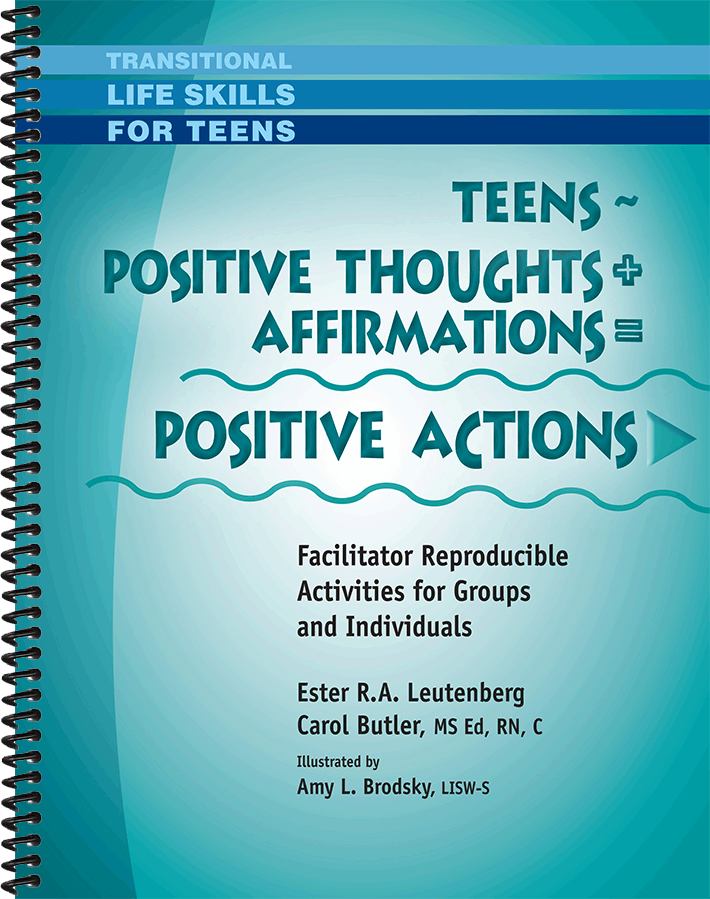
Therapists and other professionals in the field often ask their clients to write affirmations. An easy assignment? Once you guide someone through their maze of negativity to a point where they can see the many good things about themselves, the rest should be easy. That is not always the case, especially for those we work with who have spent a lifetime being criticized by folks whose opinions matter to them. Here is a nice list of what should be included in an effective affirmation, excerpted from Teens: Positive Thoughts + Affirmations = Positive Actions by Ester R.A. Leutenberg and Carol Butler, MS Ed, RN, C.
A brief restatement of affirmation theory based on the work of Claude Steele, 1988.
Claude Steele proposed a particular theory behind affirmations known as the self-affirmation theory. In this theory, Steele states that we have a fundamental motivation to maintain our self-integrity, or our natural perception of ourselves as being good, virtuous, and capable to control the outcome of important events. Steele noted that affirmations allow us to preserve and support our unconscious self-integrities; thus, through time, our subconscious will accept the affirmation as being true.
Effective affirmations are…
- Positive to create the reality you want.
- Personal and in your own words, the way you really talk.
- Powerful to motivate your thoughts and actions.
- In the present tense as if you already are who you want to be, or already have what you want.
- Believable.
- Achievable.
- Short and easy to remember and repeat.
So, to reiterate, participants should aim for affirmations that are positive, personal, powerful, present tense, believable, achievable, and short. Below is a list of 12 good ones.
- I am kind.
- I complete my work assignments on time.
- I eat healthy foods.
- I exercise an appropriate amount each day.
- I stick to my budget.
- I spend an appropriate amount of time each day gaming.
- I attend my children’s concerts.
- I walk my dog daily.
- I give to charities I believe in.
- I am cheerful at work.
- I find good in everyone.
- I support the members of my team.
Finding success with affirmations is like finding success with anything. Clients must understand that practice, practice, practice is key. Each time they repeat an affirmation they are closer to the ideal they are describing.
12 Affirmations Exercise
Audience: Group or individual working with esteem issues, career building, core values, etc.
Time: 1 hour +/-, depending upon how long the facilitator allows for writing affirmations and size of the group.
Tools: Black or white board or computer screen the participants can see. Download and copy the Affirmations Participant Handouts, which includes 3 Participant Handouts: What Is An Affirmation, Positive Traits, and Monthly Affirmations.
Presenter’s Guide
- Hand out the 3 Affirmations Participant Handouts. Have them read Participant Handout #1: What Is An Affirmation.
- Discuss the theory of affirmations and how to write them effectively.
- Solicit from them what makes a good or not-so-good affirmation.
- Ask participants to consider what they learned in the group discussion and the definitions and examples you provided. Ask them to synthesize the information, writing a brief paragraph. Let them know this will not be graded.
- Discuss their conclusions with the participants.
- Introduce Participant Handout #3: Monthly Affirmations. Be clear about the steps of the activity.
- If they seem to be having trouble coming up with 12 attributes they like about themselves go around the group and solicit ideas from each person. Of course, remember that no one should be forced to share their ideas. If they are stuck reference Participant Handout #2: Positive Traits.
- After giving the participants time to write their 12 favorite traits about themselves or goals they have, proceed to the next step. Remind them again what the traits of a well-written affirmation are. (Affirmations are positive, personal, powerful, present tense, believable, achievable, and short.)
- Instruct them to write out the affirmation they chose for this month and put it up at home where they will see it every day.
- Remind them to journal about how they are feeling throughout the month.
